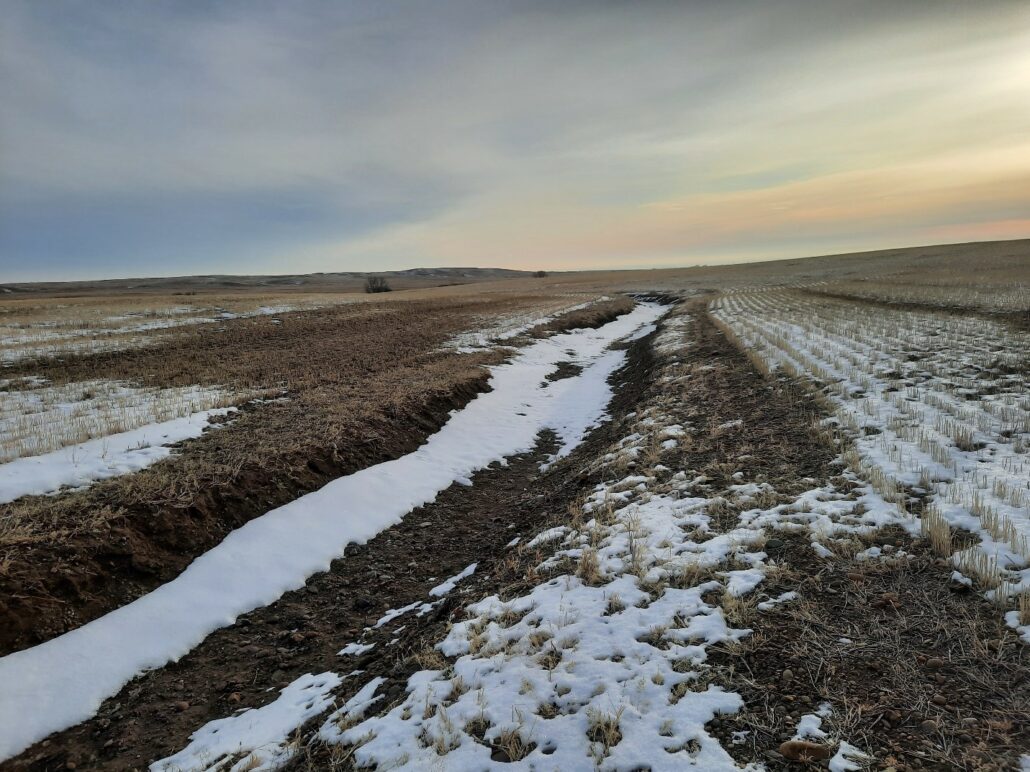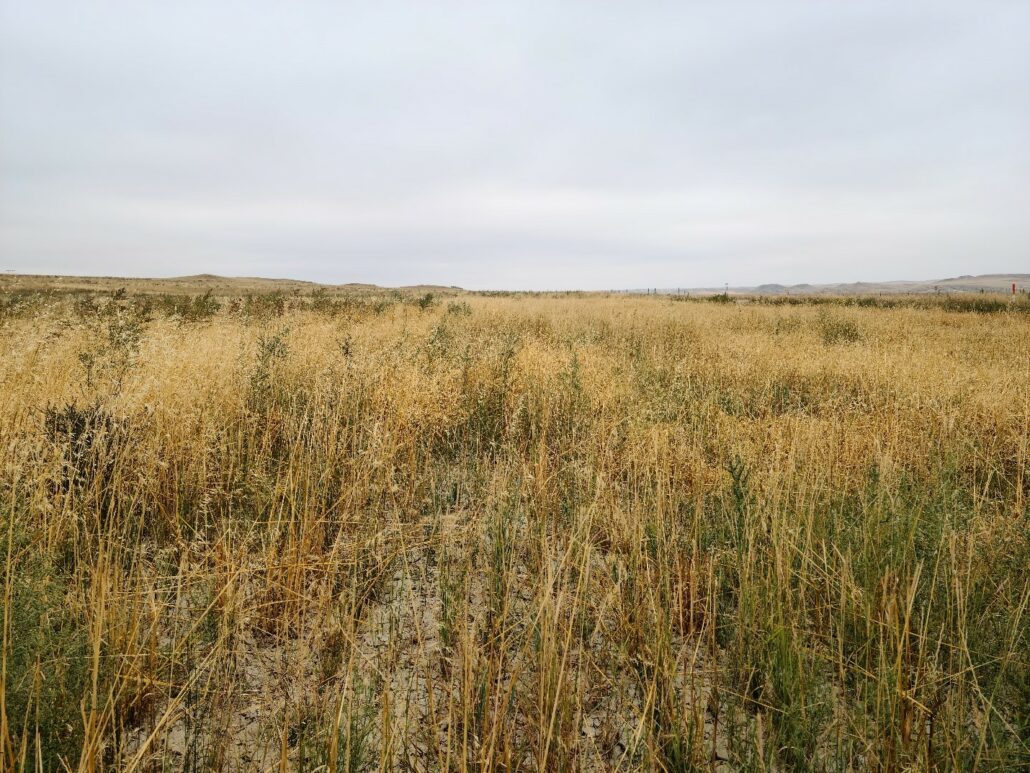Around you, things have grown quiet as the grass billows golden in the wind. Another summer in the Northern Great Plains has come and gone, now fleeting as quickly as it arrived. With it, the many birds who travel thousands of miles to call these grasslands home during the breeding season have begun to make the long journey back to their wintering grounds. For the many ranchers and farmers of eastern Montana, the work is not done. They are deep into harvest, often working late into the nights before the first touches of frost begin to take over the landscape, transforming it from a golden sea to a frozen tundra.
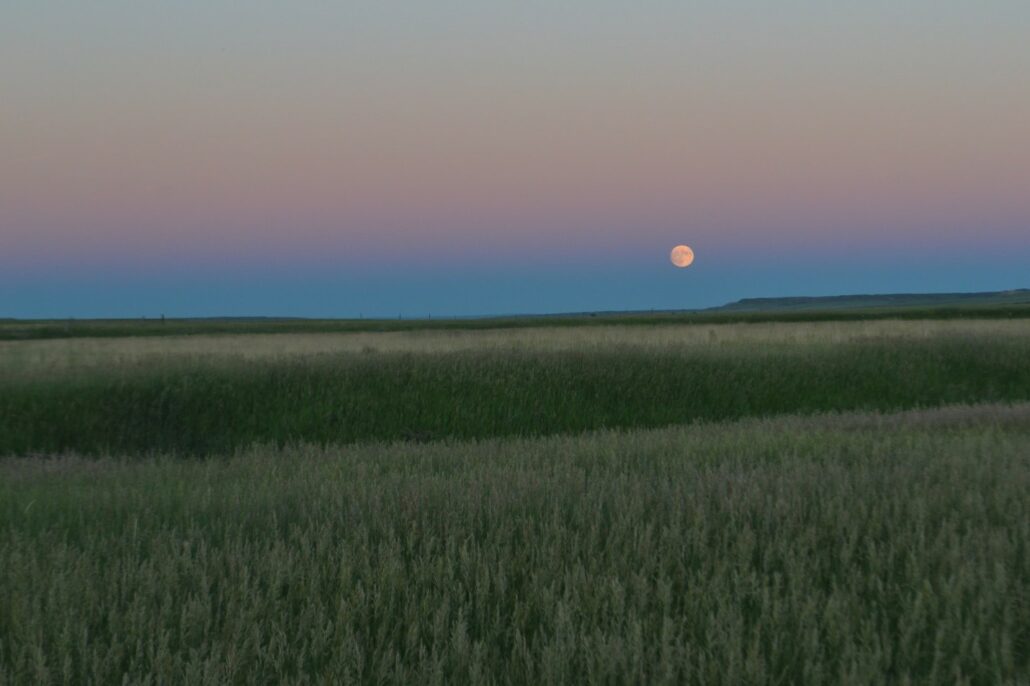
The buck moon rising above the Northern Great Plains.
And, amidst it all, beneath the boots and the grass and the ground-nests, lies a world often ignored. A world where millions of creatures exist, allowing the rest of the ecosystem to flourish. A microbiome that is just as important to the health of the grasslands as any above-ground factors.
That is why in eastern Montana, through the USDA-Farm Bill Environmental Quality Incentives Program, I wrote two Targeted Implementation Plans (TIPs) focusing on regenerating soil health by converting cropland back to grasslands and developing infrastructure to help facilitate healthy grazing rotations. Although crops play an important role in agriculture, some areas are considered “marginal cropland”: that is to say, land that produces crops that are often unable to yield a profit.
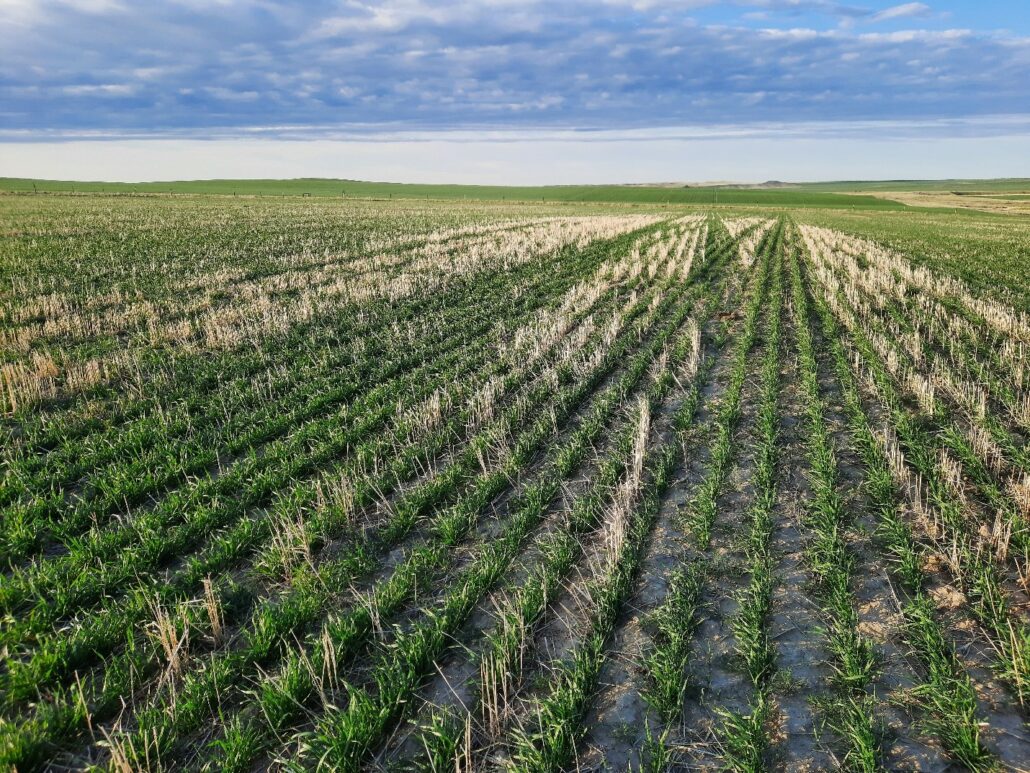
Cropland that was reseeded in fall of 2021 under the 2021 Can You Dig It: What’s Good for the Herd is Good for the Bird, Dawson County TIP.
Whereas this land was farmed years ago, be it because during homesteading it was necessary to produce food to meet the needs of the people or for other reasons, much of the land is now showing signs of depletion. Soil is full of living organisms, but like any living creature, these organisms have needs that have to be met. From organic matter for food to soil moisture to the right temperatures for survival, maintaining the needs of these microorganisms is just as important to the grasslands as protecting the habitat for the birds we work to conserve and the prairie for the livestock the ranchers depend on.
Part of what makes this cropland marginal is the soil type. In this region, the soil can’t always sustain long-term farming. The soil organic matter, which is comprised of plant and animal material, is depleted due to extensive use which can damage the microorganisms, or the below-ground “herd”. These microorganisms play in important role in decomposing plant litter and helping develop soil structure. Without the below-ground “herd”, permanent roots, and soil structure, the soil becomes susceptible to erosion. Over time, farming becomes difficult, if not impossible, as large gullies develop in fields.
- Before: One of the eroded gullies in a field that was reseeded in fall of 2021 under the 2021 Can You Dig It: What’s Good for the Herd is Good for the Bird Dawson County TIP.
- After: The same field with the gully above showing progress of restoration to an introduced native mix of grasses and forbs after only one-year post-planting
Restoring these types of croplands back to perennial grass creates permanent roots that help to stabilize the soil, as well as put more soil organic matter and nutrients back into the soil, helping to feed the below-ground “herd”. It also creates above-ground shade, bringing much needed relief on the scorching summer days that the Northern Great Plains are known for—not just for the microorganisms either, but for the songbirds and other wildlife. It is easy to forget how connected all the components of this land are but standing in a once-fallow crop field that is slowly making its comeback to grass, you are reminded how fragile and resilient the prairie is.
Resiliency is a concept discussed often in wildlife, rangelands, and human dimensions. The term itself means the capacity to recover quickly from difficulties; “toughness”. Grasslands and rural communities have this in common. When we have a strong below-ground herd, we have a resilient grassland. Drought, fire, invasive pests, these are things grasslands can often recover from. I remember a moment at a Soil Health Workshop listening to Nicole Masters (Director, Integrity Soils) discussing grasshoppers, a common destructive pest of ranchers and farmers alike and the conversation focused on using management of healthy soils to minimize grasshopper abundance, but rather we still use pesticides and non-sustainable agriculture practices when a resilient grassland has the natural ability to thrive and survive.
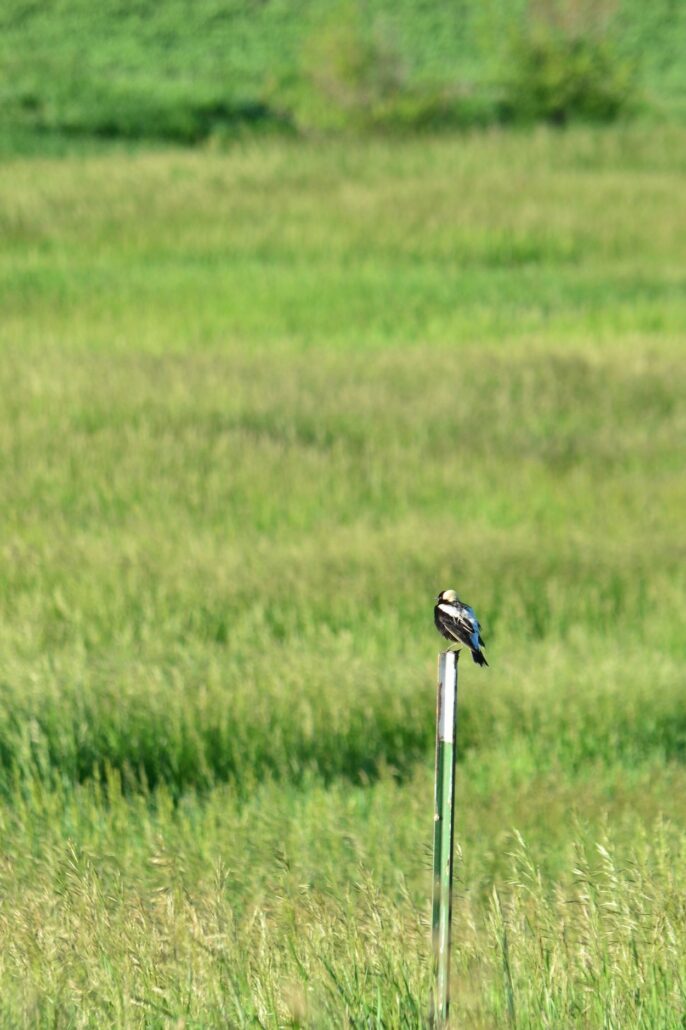
A Bobolink perches near one of the TIP project areas, spotted during bird surveys being conducted to monitor bird responses to reseeding efforts.
This isn’t a story singular to soil though, and I am no soil scientist. This story started with a conversation with one producer who wanted to reseed a bit of his cropland back to grass and a new Private Lands Wildlife Biologist who was just looking to meet landowners and look for projects that would benefit wildlife. That’s the beauty of land stewardship though, isn’t it? We have this flexibility to take one conversation, one idea, and watch it spread across the prairie like wildfire. It takes time, and it takes trust, and it takes effort; but the reward is long-lasting.
The result of that conversation with one producer became $3 million of USDA-Farm Bill funding to restore over 10,000 acres of cropland to grass, working with 30 landowners. We can’t do it alone though. Partners like World Wildlife Fund, Northern Great Plains Joint Venture, and Pheasants Forever are also restoring the land and have come together to combine efforts and expand our conservation footprint and with further support from National Fish and Wildlife Foundation and Montana Game, Fish and Parks our efforts go even further. So, you never know where a conversation might lead you: All it takes is one to create a network of landowners willing to build resiliency, from the ground up.
Partnerships are key in order for us to accomplish large-scale projects like this. The Central Grasslands Roadmap aims to guide and inform innovative and connected conservation for the benefit of grassland birds, pollinators and mammals, as well as to ensure viable human communities across the landscape of one of North America’s most biogeographically unique areas. Check out the Central Grasslands Assessment Map to learn more about the current state of our grasslands in North America.
Tayler Scherr is a Senior Private Lands Wildlife Biologist based in Glendive, MT. All photos by author. Click HERE to learn more about our Stewardship team.


